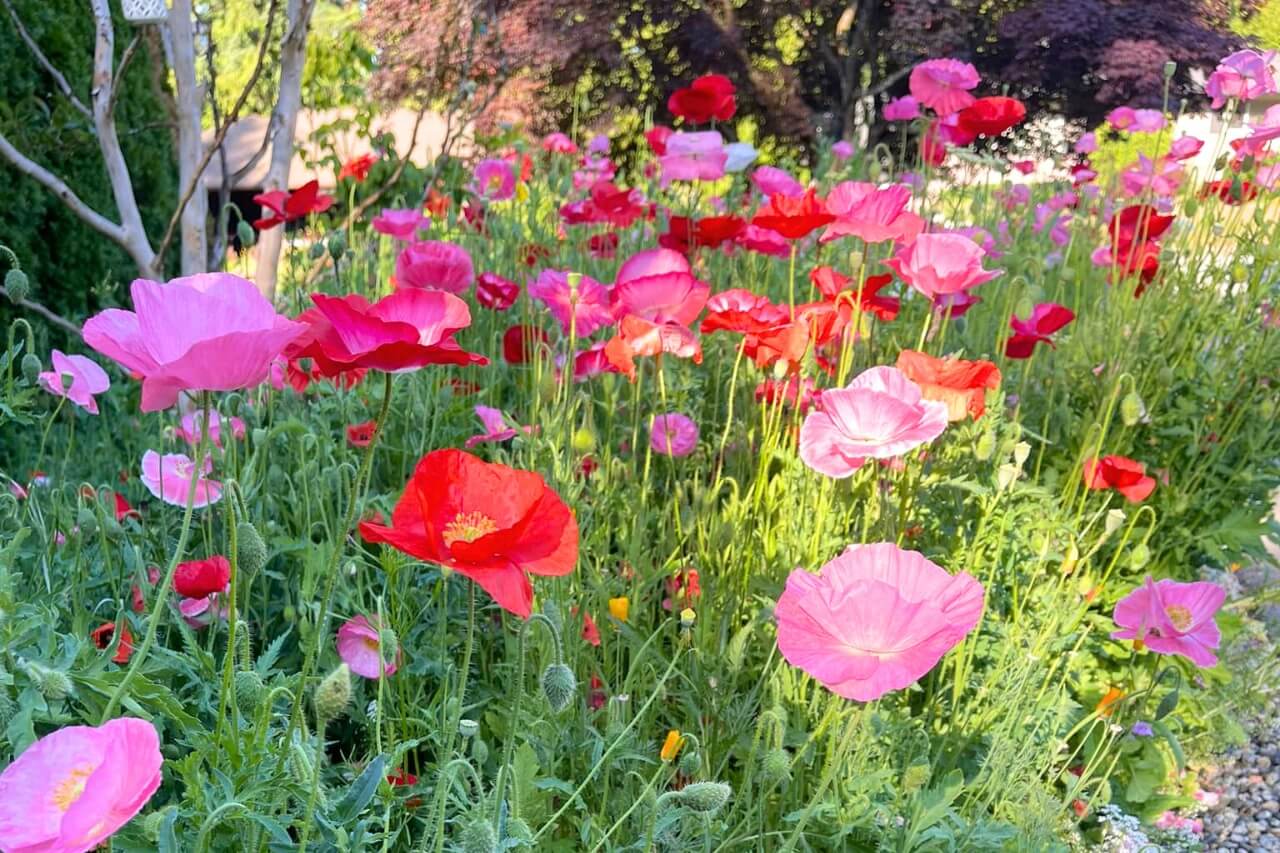Autumn is the time of year when leaves start to fall and the garden begins to wind down.
However, expert gardeners know this is not the end; it’s actually the beginning of next spring’s wildflower planning.
Planting wildflower seeds in autumn is perfect if you want a burst of color when warmer days return.
By sowing seeds now, you’re basically mimicking Mother Nature’s cycle: many wildflowers drop their seeds in fall, let winter work its magic (through cold stratification), and then bloom when spring comes.
The result? A low-effort, high-reward blooming spring meadow that will make you feel like you’re walking through a watercolor painting.
How can this be achieved, and which flowers are most suitable in this case? Let’s take a look at the best ones and what precautions to take when planting them.
Pick the Right Spot
Choose an open area with plenty of sunshine (at least 6 hours a day for most wildflowers) and well-draining soil.
If the area is weedy or grassy, clear it or mow it low, and lightly rake the soil surface so seeds can contact bare earth.
You don’t need to till deeply – wildflowers are unfussy, but good seed-to-soil contact is key.
Sow with a Light Touch
Wildflower seeds are often tiny, so gently scatter them over the prepared soil.
Mixing seeds with a bit of sand can help you spread them evenly.
After sowing, do not bury them deeply – just press them into the soil or rake very lightly. Many wildflower seeds actually need light to germinate, so they should remain near the surface.
Skip the Mulch and Weed Killers
Resist the urge to cover the seeded area with thick mulch or straw. It might suppress weeds, but it will also block your wildflower seeds from sprouting.
Similarly, avoid using any “weed preventer” or pre-emergent herbicide where you’ve sown wildflower seeds – those products can stop your flower seeds from germinating too.
Let the Rains Work (but Don’t Let it Dry Out)
If October or November grace you with a good rain, your job is basically done – nature will water in the seeds for you.
If it’s dry, water the area gently to keep the topsoil moist for a couple of weeks as seeds begin to sprout.
It’s also a good idea, and I always do it, to mark the area where you scattered seeds (with small flags or stakes), so when spring comes, you remember not to mow or accidentally disturb it.
Wildflower seedlings can look like “weeds” to the untrained eye, so be mindful when spring arrives and your meadow starts to wake up!
Now for the fun part – choosing which wildflowers to plant. I’ve curated 15 of the best wildflowers to sow at this time that will reward you with a gorgeous meadow in spring.
1. California Poppy
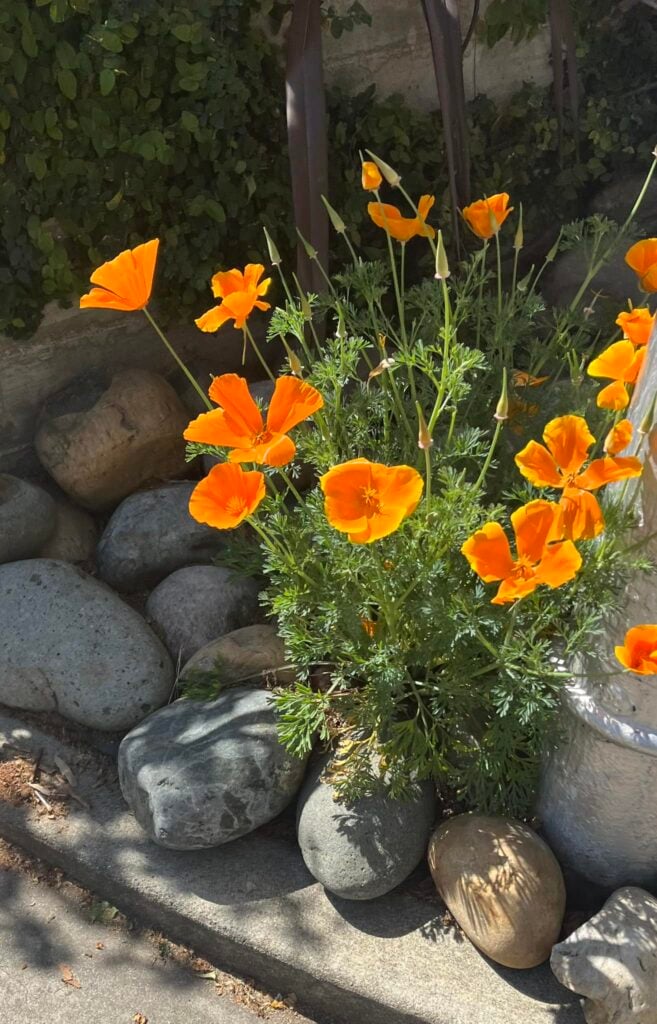
Nothing says “spring in bloom” quite like the California poppy.
This vibrant wildflower carpets whole hillsides in golden-orange during springtime, and it can do the same (on a smaller scale) in your yard.
It has delicate fern-like blue-green foliage that adds texture to the winter garden before bursting into cup-shaped blossoms.
Consider that California poppy is an easy-going annual that actually prefers being sown in the fall or winter.
Just sprinkle the seeds over well-drained soil in a sunny spot – they’ll settle in with winter rains and start blooming as soon as longer days and milder temperatures arrive.
2. Red Corn Poppy
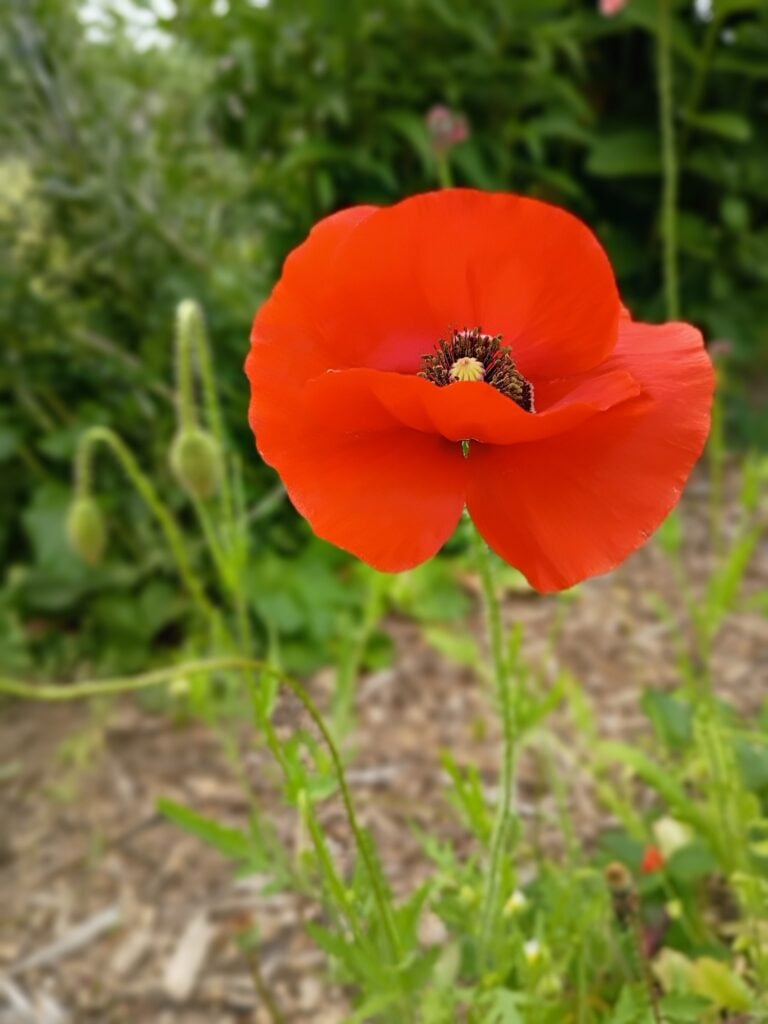
If you’ve ever admired the romantic red poppies in European paintings or the wild poppies that bloom across meadows in spring, this is the plant for you.
The corn poppy (also called Flanders poppy or Shirley poppy) is the iconic small red poppy that inspired poems and symbolizes remembrance.
October is a prime time to sow corn poppy seeds, because they actually germinate best after a chill.
In fact, sowing these seeds in fall can give you earlier and more abundant blooms compared to waiting until spring.
3. Bachelor’s Button
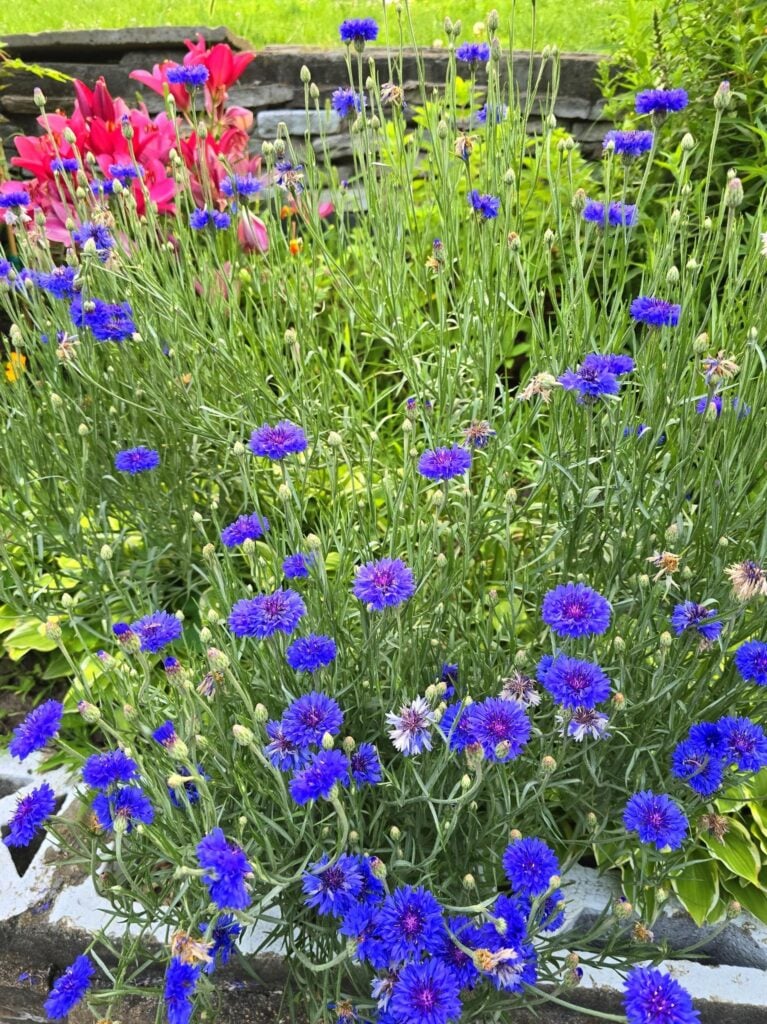
For a splash of blue in your spring meadow, include bachelor’s buttons, also known as cornflowers.
Not a lot of people know it, but these flowers earned their nickname because bachelors in bygone days would wear a cornflower in their buttonhole to signal they were in love.
As you can see from the photo above, they have frilly petals and a vivid purplish-blue hue (as well as pink, white, or burgundy in some varieties).
I particularly like them because they bring an old-fashioned cottage garden vibe to the meadow.
4. Lupines
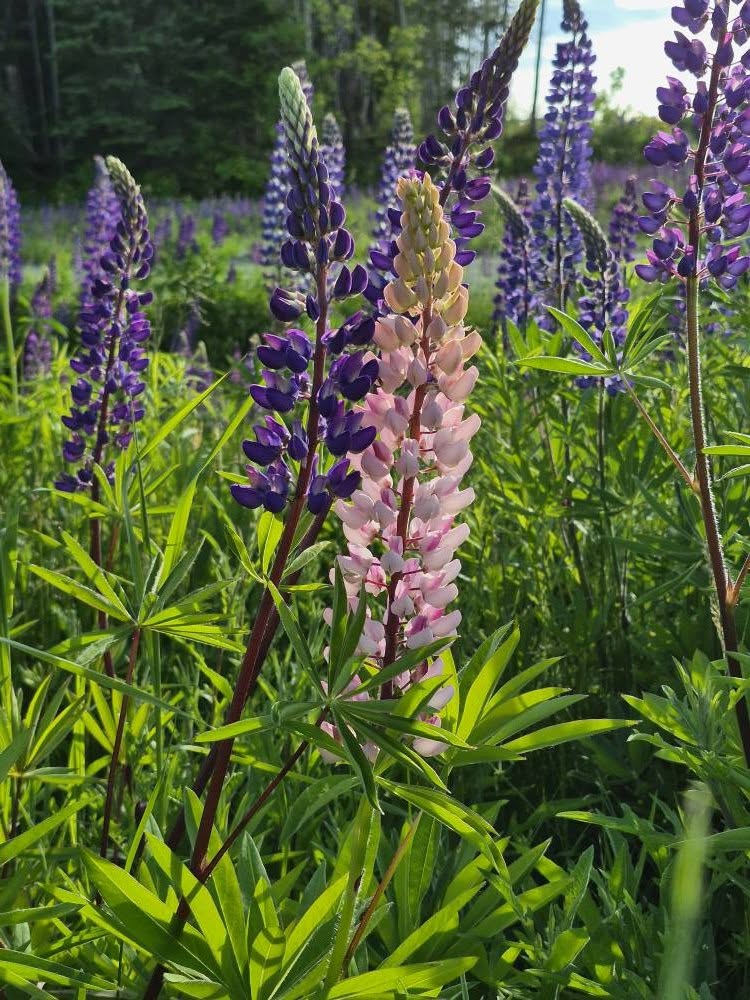
I also like to add some verticality to my meadow, so I usually plant a few varieties of lupines.
If you don’t know, lupines produce gorgeous spires of pea-like blossoms in shades of blue, purple, pink, or yellow, and they are wonderful for a spring display.
In the American South, the famous Texas bluebonnet (a type of lupine) is the star of spring wildflower meadows – it’s even the state flower of Texas and is often seeded along highways to create rivers of blue every spring.
However, you don’t have to live in Texas to enjoy lupines. There are many species and hybrids all around the world.
5. Larkspur
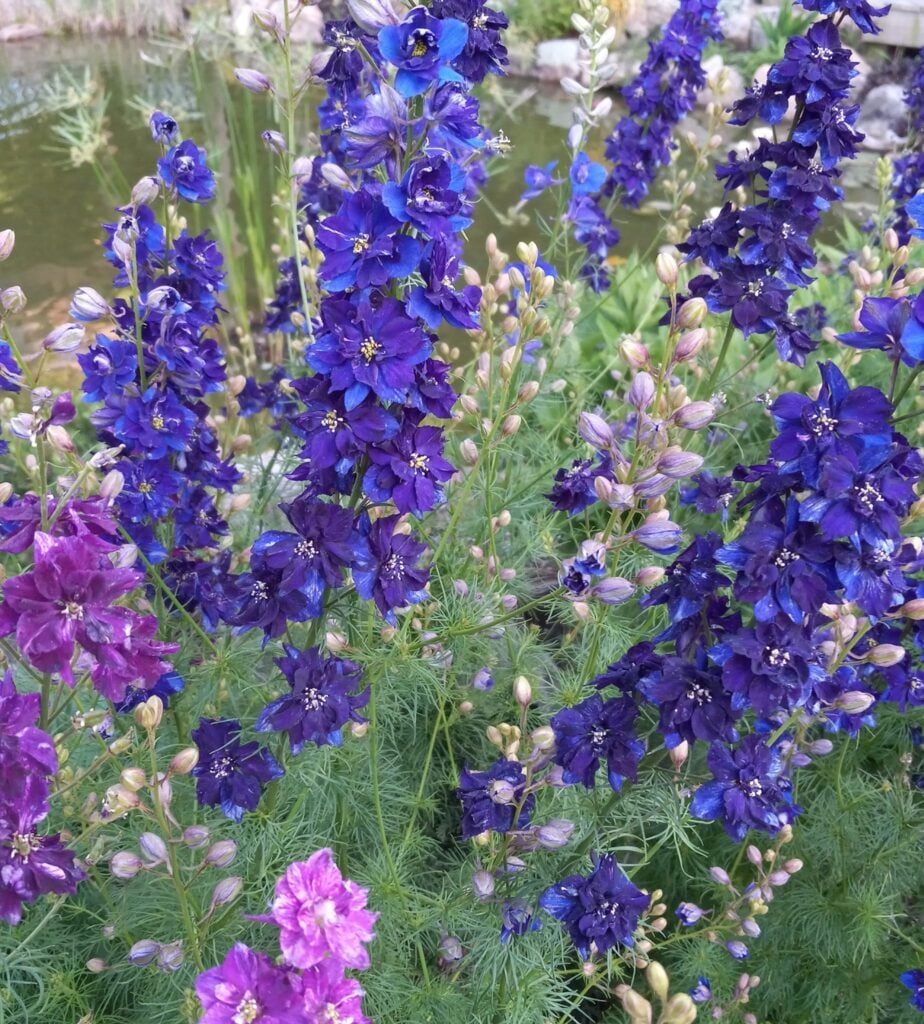
If you love the look of delphiniums but find them a bit fussy, meet their easygoing cousin, larkspur.
Larkspur is an annual wildflower that produces tall, airy spikes studded with blossoms in enchanting colors like soft pink, lavender, deep purple, and white.
They lend a nostalgic, cottage-garden charm and also look right at home in naturalized meadows.
Fall is also the perfect time to sow larkspur seeds because they absolutely require a cool period to germinate, so you can sow them in October or even in winter to have the best results.
6. Black-Eyed Susan
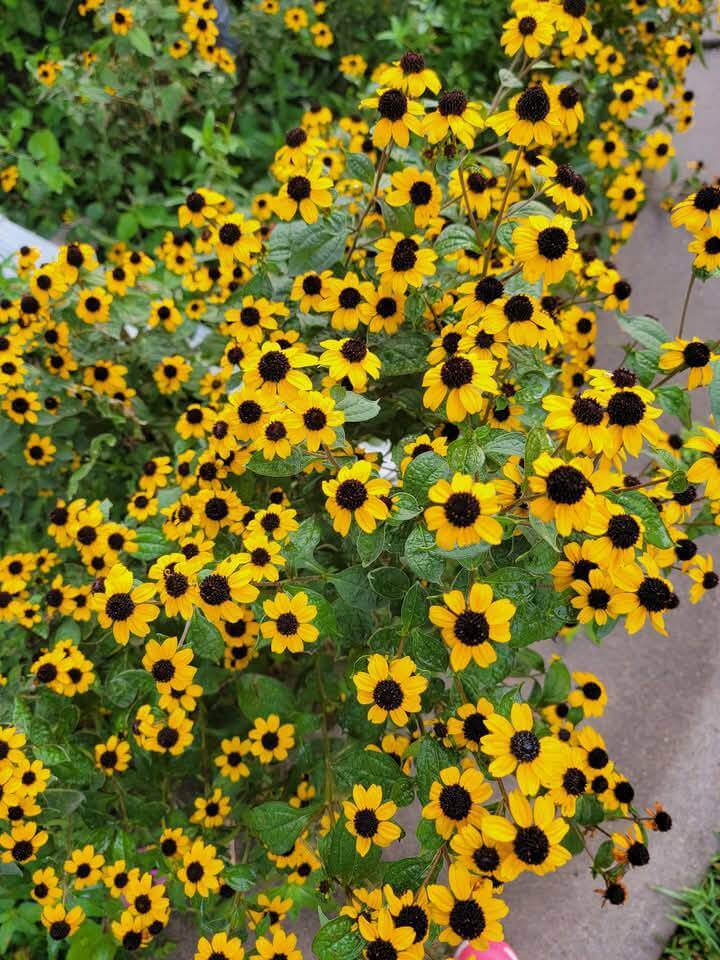
Black-eyed Susans are those cheerful yellow daisies with a dark “eye” that you’ve probably seen roadside or in some gardens.
They are the perfect American wildflowers – native to prairies and fields across much of the U.S., and they’re an excellent choice for a fall-planted meadow.
Consider that Back-eyed Susan is a short-lived perennial (often grown as a biennial or annual) that is very forgiving to grow.
If you sow the seeds in October or November, they can settle in over winter and often germinate in the very early spring.
A thing that I love about that is that they’re very tough and drought-tolerant. That’s why I’ve included then in the list of the 10 tough plants that grow anywhere (no matter how bad the soil).
7. Blanket Flower
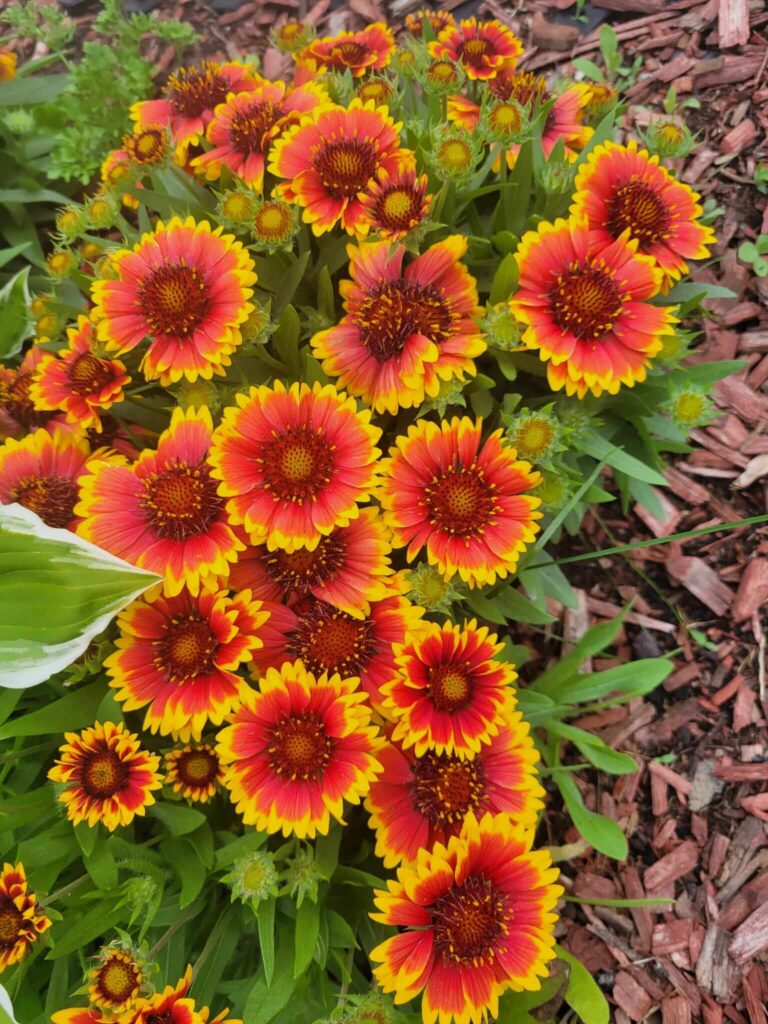
For a dose of hot colors, which I love, and a flower that can take the heat, opt for blanket flower.
It’s also known as Indian blanket in some areas, but it’s the same wildflower with usually red and yellow daisy-like blooms and a long flowering season.
If you look carefully, you’ll notice that the petals often have a two-tone effect – for example, fiery red near the center and golden yellow at the tips.
I really like them because they remind me of sunset and are perfect for adding a beautiful, bright color to your entire garden.
8. Purple Coneflower
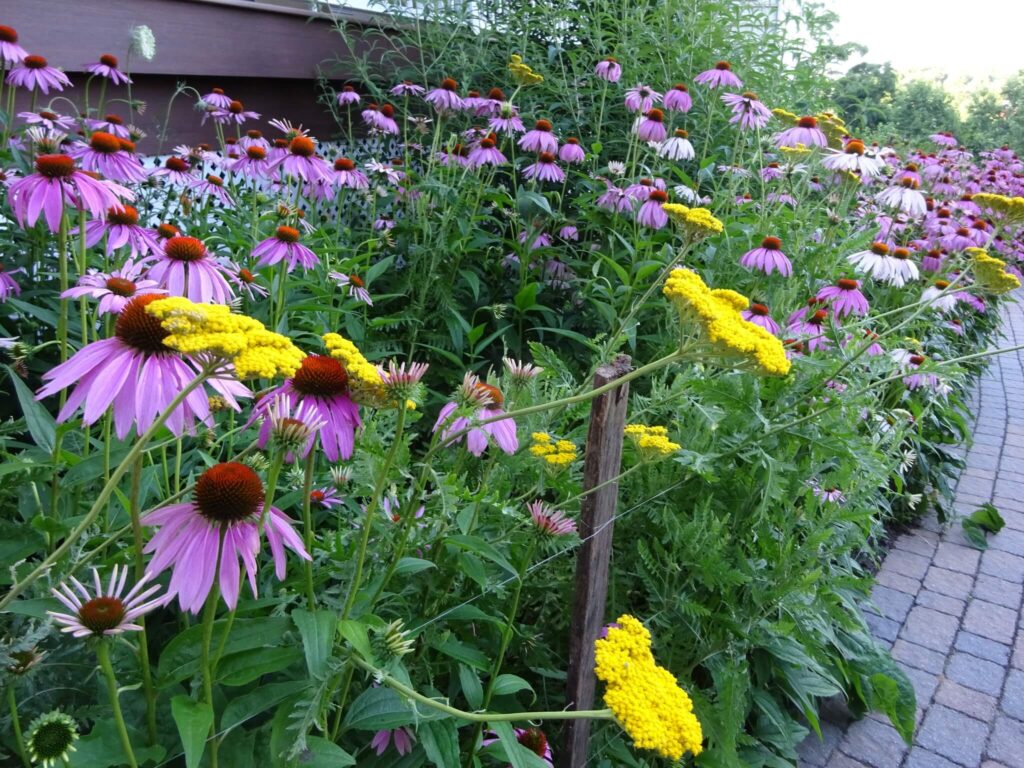
No wildflower garden would be complete without purple coneflower.
Coneflowers, also known as Echinacea, have a distinctive look: rosy-purple (sometimes pink or white) petals that droop slightly around a spiky orange-brown central cone.
They are native to the central and eastern U.S. prairies, adapted to open, sunlit spaces.
When you sow coneflower seeds in October or November, they’ll undergo natural cold conditioning and often sprout in spring when soil temps warm.
Please remember that some coneflowers might not bloom until their second year (since they are perennials), but a fall sowing increases the chance of first blooms next summer, especially if the plants get a few months of growth before winter.
Echinacea is also one of my favorite plants for naturally controlling weeds. Have a look at the list of the perennial flowers that naturally crowd out weeds.
9. Foxglove Beardtongue
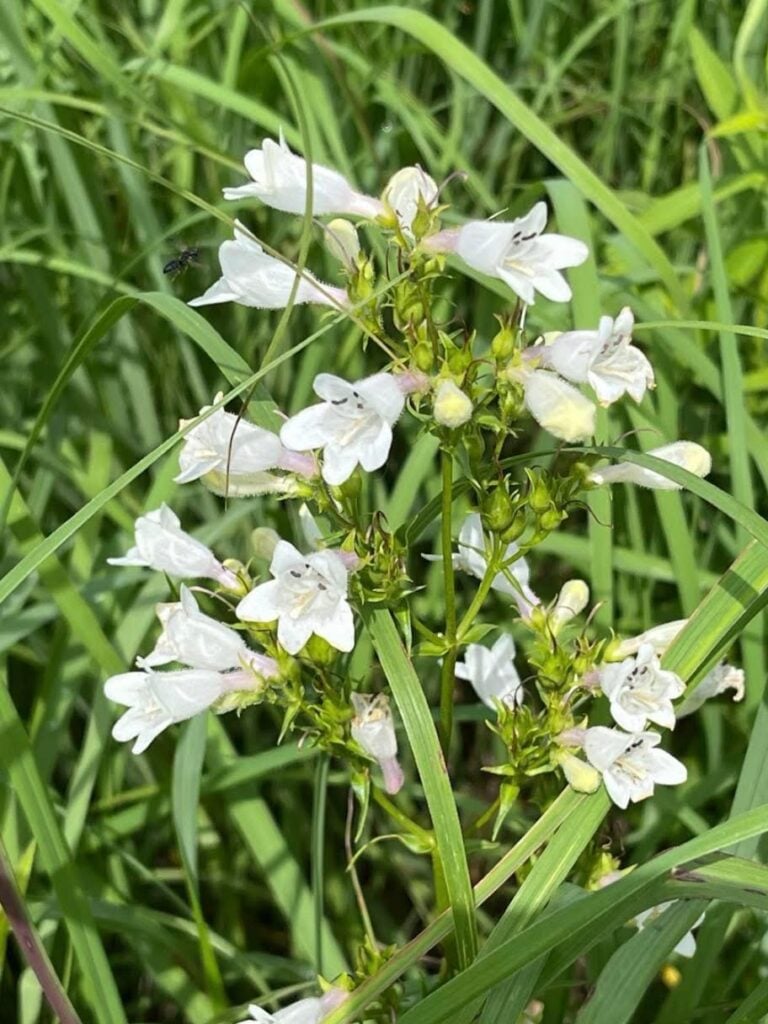
Despite the tongue-twister name, foxglove beardtongue is a hardy native wildflower worth knowing – and planting in fall. I
It’s actually a type of Penstemon, also sometimes just called Tall White Beardtongue.
I personally think that this plant brings an element of elegance but also some vertical height to the meadow.
I don’t know if you’ve ever seen it, but it’s quite common to find it wild in various parts of the Eastern US, often in open woods or prairies, which means it can handle full sun or partial shade and isn’t too picky about soil.
10. Bee Balm
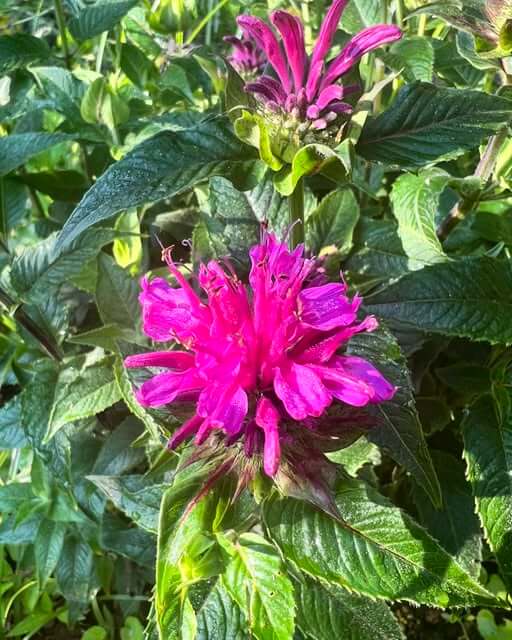
Do you want your spring meadow to smell as wonderful as it looks? Then plant some bee balm in the mix.
Bee balm, also known as wild bergamot, is a native perennial famous for its shaggy, pom-pom blossoms in shades of lavender, pink, red, or white.
The flowers have an eccentric, I call them firework-like form, and a minty fragrance that fills the air.
The other very positive thing is that it really supports wildlife. As the name suggests, bees adore it – especially bumblebees, which will roll around flowers to gather nectar and pollen.
It’s also loved by butterflies, but thankfully, deer avoid it. That’s why I’ve included it in the list of the 20 stunning plants deer will always avoid.

